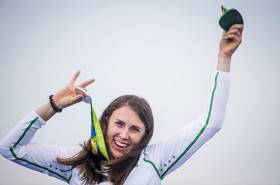Displaying items by tag: Women in Sport
Sailing and rowing are among the beneficiaries of Sport Ireland’s €3 million investment in women in sport announced yesterday (Thursday 6 September).
Rowing Ireland will receive €100,000 over two years, while Irish Sailing and Canoeing Ireland will get a total of €80,000 for 2019 and 2020.
Irish Surfing also figures in the list with a €20,000 total allocation for this year and next, while the Irish Waterski and Wakeboard Federation receives €10,000.
Funding under the relaunched Women in Sport Programme complements the €265,000 allocated to Local Sports Partnerships earlier this year, brining Sport Ireland’s total investment for 2019 and 2020 to €3,277,000.
The announcement follows the publication of Sport Ireland’s new Policy on Women in Sport earlier this year, which identifies four key target areas: Coaching & Officiating, Active Participation, Leadership & Governance, and Visibility.
Speaking at the launch at the Sport Ireland campus in Blanchardstown, Sport Minister Brendan Griffin said: “One of the key objectives of the Government’s National Sports Policy is to increase the number of women and girls participating in sport and to eliminate the participation gradient between men and women.
“While the gender gradient, at 4.5%, is narrower now than at any point over the past 10 years, it is important that this gradient is eliminated altogether.
“Sport Ireland’s new Women in Sport Policy and the re-launched Women in Sport Programme is essential in this regard. I want to pay a particular tribute to our high-profile sportswomen who continue to inspire and encourage thousands of girls and young women throughout Ireland every day to become involved in sport and to stay involved.”
Lynne Cantwell, chair of the Sport Ireland Women in Sport Steering Group, added: “The funding process has seen national governing bodies embrace projects focused on developing leadership opportunities, and pathways to coaching and officiating.
“This holistic approach will lead to a step-change in the landscape for women’s involvement in sport across the board from grassroots to leadership.”
#Rowing: Rowing Ireland has received a commendation from the International Olympic Committee for its work in promoting women’s sport. The Irish governing body were awarded the “Women and Sport” Achievement Diploma in recognition of its “outstanding contribution to promoting the development and participation of women and girls in sport”.
The Get Going, Get Rowing programme has introduced big numbers of girls to rowing.
























